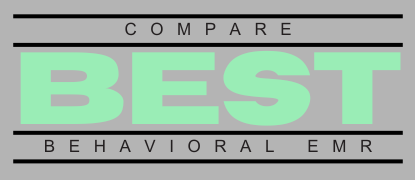
If you’re running a behavioral health practice, you probably know the struggle: you’re drowning in data, but somehow still thirsty for insights. You’re paying good money for your behavioral health EMR, yet it feels like you’re only scratching the surface of its capabilities. Sound familiar? Well, you’re not alone. The real power of your EMR lies in its analytics features, and trust me, tapping into these can be a total game-changer.
As someone who’s hopped from system to system, feeling occasionally lost and frequently frustrated, I can confidently say that learning how to effectively use EMR analytics features transformed my practice management and patient care. So, let’s dive in and get you on the right track.
What Exactly are EMR Analytics Features, Anyway?
Simply put, EMR analytics features are tools within your electronic medical record system that help you crunch and visualize data to inform decisions. It’s like turning a messy pile of Legos into a neatly organized masterpiece (okay, maybe that’s a stretch, but you get the idea). These features help you analyze patient outcomes, spot trends, track financial performance, and even improve operational efficiencies.
Why EMR Analytics Features Matter for Behavioral Health Providers
In behavioral health, data-driven decision-making isn’t just trendy; it’s essential. We’re talking about real-world impacts on patient care, financial sustainability, and your team’s sanity. Here’s why these analytics are worth your attention:
- Better Patient Outcomes: Spotting trends in patient progress, adherence, and treatment effectiveness allows you to tweak your approaches before small issues become big ones.
- Operational Efficiency: Analytics can highlight bottlenecks and inefficiencies. Ever wonder why scheduling always seems chaotic? Analytics can help pinpoint the root causes.
- Financial Clarity: Understanding revenue streams, reimbursement patterns, and billing issues can transform your practice from financially stressed to financially savvy.
- Compliance and Quality Reporting: The right analytics tools ensure you’re meeting regulatory standards and quality measures effortlessly.
How to Get the Most Out of EMR Analytics Features (Without Losing Your Mind)
Step 1: Identify Your Key Metrics
Before diving into the analytics dashboard, ask yourself: “What exactly do I need to know?” Whether it’s tracking patient retention, appointment no-shows, or clinician productivity, clearly defining your goals helps you zero in on what’s important.
For example, I once spent two weeks obsessing over “time spent per patient note,” only to realize it didn’t significantly impact my practice’s bottom line. Lesson learned: focus on metrics that truly matter.
Step 2: Use Dashboards and Visualizations
Most EMRs, including popular ones like Kareo, SimplePractice, or Opus, offer intuitive dashboards and visual reports. Don’t underestimate the power of visuals; they make complex data digestible at a glance. A graph showing appointment no-shows dropping month-over-month? Now that’s something your team can celebrate.
Step 3: Automate Reports (Because Life’s Too Short for Manual Data Pulling)
Manual report generation feels a bit like doing taxes by hand; tedious, error-prone, and soul-draining. Thankfully, most quality behavioral health EMR platforms allow you to schedule automated reports. So, set it, forget it (almost), and check your inbox each week or month for actionable insights.
Step 4: Act on Data-Driven Insights
Analytics are useless if you don’t act on them. If you notice increased cancellations every Tuesday morning, maybe it’s time to shift scheduling around. If certain treatment plans correlate strongly with improved outcomes, consider expanding their usage. Data gives you direction, but action creates change.
Choosing the Right EMR for Your Analytics Needs
Let’s be real: not all behavioral health EMRs are created equal. Some have fantastic billing capabilities but lack robust analytics. Others have gorgeous dashboards but miserable user experiences. And yes, I’ve used both, painfully so.
To find the right fit, consider factors such as:
- Customizable Reports: Can you tailor analytics reports to your specific needs?
- Ease of Use: Is the analytics interface intuitive, or does it feel like solving a Rubik’s Cube blindfolded?
- Integration Capabilities: Does the EMR play nicely with other software you use?
- Vendor Support: Do they provide adequate training and ongoing support?
Try a Free Practice Analysis Before Committing
Here’s my pro tip: don’t guess, assess! A free practice analysis can help identify your practice’s specific needs and match you with EMR solutions that tick your boxes. It’s like having a personal shopper for EMRs, minus the awkward small talk.
Real World Example: A Tale of Two Practices
Consider two hypothetical behavioral health practices:
- Practice A: Uses EMR analytics to identify high no-show rates. Implements automated appointment reminders, reducing cancellations by 25%. Revenue increases, clinicians happier, stress levels drop.
- Practice B: Ignores EMR analytics entirely, continues to face scheduling chaos, loses revenue, clinicians frustrated, practice stagnates.
Which practice would you rather be? (Hint: choose Practice A.)
Conclusion: EMR Analytics Features are Your Friend, Use Them!
When used effectively, EMR analytics features can drastically improve your behavioral health practice outcomes, streamline operations, and boost revenue. Remember, analytics aren’t another item on your endless to-do list; they’re a powerful tool to simplify your workflow and boost your practice’s success.
Are you ready to finally make your behavioral health EMR work for you instead of the other way around? Start with a free practice analysis today, and let the data-driven journey begin.
